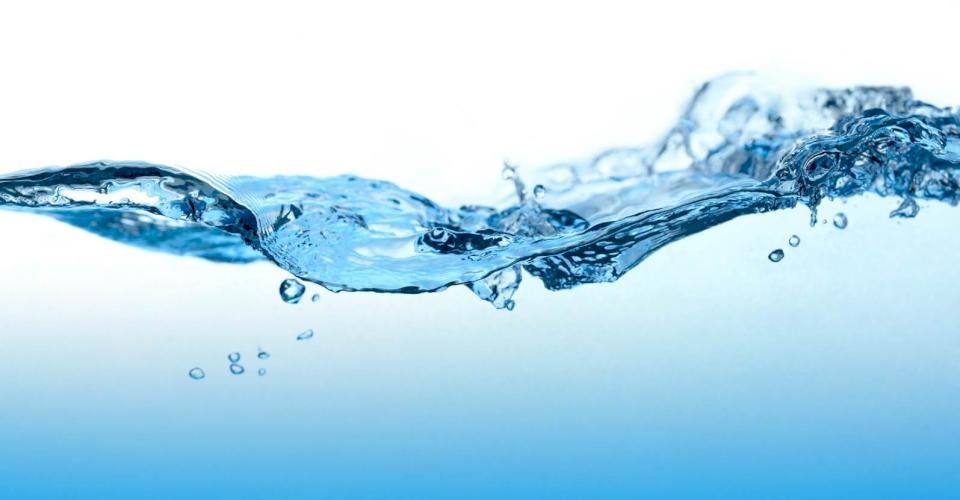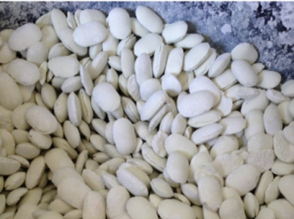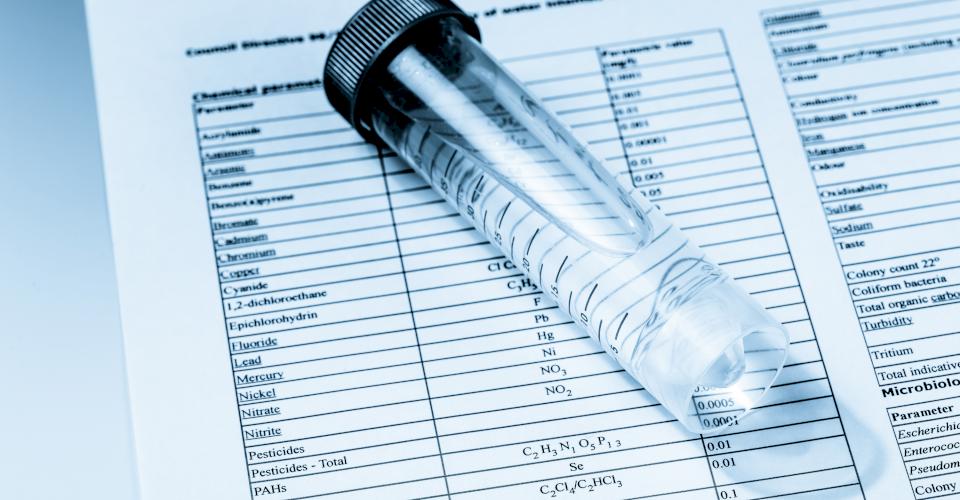Calcium hypochlorite is an inorganic compound added in granular or tablet form added to water to kill germs that can make people sick. When used correctly, this compound destroys germs that can cause numerous health problems. ANSI/AWWA standard C651-14 incorporates essential procedures and requirements for the disinfection of new potable water mains. In this blog, we’ll cover why, when, and how it’s used in the waterworks industry.
Every year waterborne disease outbreaks occur because of public water distribution system deficiencies. A significant number of these outbreaks are caused by broken water mains or contamination of water mains during construction or repair. Disease outbreaks emphasize the importance of using proper procedures and methods when repairing water mains.
To prevent waterborne disease outbreaks, every supplier of water for a public water system must disinfect all newly constructed or repaired water distribution mains by the methods and procedures proposed by the American Water Works Association (AWWA) standards. Calcium hypochlorite granules shall disinfect new water mains before they are placed in service.
Disinfection of New Water Mains by Calcium Hypochlorite Granules
The use of calcium hypochlorite for disinfection is a relatively simple and cost-effective process that does not require extensive technical expertise. It can handle supply systems of varying sizes by altering dosing systems or storage for chemical contact. The calcium hypochlorite granules are a powerful disinfectant; it kills almost 99.9 percent of all germs (bacteria, viruses, and mildew) and makes the water flowing through potable water lines clean and healthy.
How is Calcium Hypochlorite Applied to New Water Mains?
AWWA C651-14 standard can be used as a guide for the preparation of water mains, application of calcium hypochlorite, sampling, and testing for the presence of coliform bacteria. Calcium hypochlorite conforming to AWWA B300 is available in granular form and must contain approximately 65 percent available chlorine by weight. The material should be stored in a cool, dry, and dark environment to curtail its deterioration. Disinfection of water mains should be done by contractors that install underground water pipelines with calcium hypochlorite as per AWWA standards. Water testing would then be performed in the water utility lab or by a third-party testing provider.
For new mains, sets of samples shall be collected after every 1,200 feet (370 m) of the new water main, and one set from the end of the pipeline and at least one from each branch longer than one pipe length. Disease outbreaks emphasize the importance of using proper procedures and methods when disinfecting water mains using calcium hypochlorite granules to ensure safe and clean water passage through potable water lines.
Methods of Disinfection by Calcium Hypochlorite
The Tablet Method is generally used for disinfection of water mains of 12 inch and smaller diameter mains. The tablet method consists of placing calcium hypochlorite granules or tablets in the water main during installation and then filling the main with potable water to create a calcium hypochlorite solution.
This method may be used only if the pipes and appurtenances are kept clean and dry during installation. The required number of tablets are placed on the inside top of each joint and held in place by approved mastic. The main is then filled with water at a velocity of less than 1 foot per second, and the water is left in the main for at least 24 hours before flushing.
Placement of Calcium Hypochlorite Tablets During Construction
Calcium hypochlorite tablets (5-grams) shall be placed in the upstream end of each section of the pipe to be disinfected, including branch lines. Also, at least one tablet shall be placed in each hydrant outlet and other appurtenances. The chlorinated water shall remain in the pipeline for at least 24 hours. If the water temperature is less than 41°F (5°C), the water shall stay in the pipe for at least 48 hours. The table below shows the number of tablets required for commonly used sizes of pipe.
Number of 5-g calcium hypochlorite tablets for a dose of 25 mg/L
| Pipe Diameter | Length of Pipe Section (m) |
|||||
|
4 |
5.5 |
6.1 |
9.1 |
12.2 |
||
| Inch | (mm) | Number of 5-g calcium hypochlorite tablets | ||||
| 4 | 100 | 1 | 1 | 1 | 1 | 1 |
| 6 | 150 | 1 | 1 | 1 | 1 | 1 |
| 8 | 200 | 1 | 2 | 2 | 3 | 4 |
| 10 | 250 | 2 | 3 | 3 | 4 | 5 |
| 12 | 300 | 3 | 4 | 4 | 6 | 7 |
| 16 | 400 | 4 | 6 | 7 | 10 | 13 |
The Slug Method of Chlorination is used for large diameter water mains. It comprises moving a column of highly concentrated calcium hypochlorite water solution (at least 300 mg./L) along with the interior of the pipe with a contact time of a minimum of three hours with the pipe wall. The flushed water should be visually clear and have typical system chlorine residual.
For very-large-diameter pipe (where personnel may safely enter the pipe), instead of flushing following disinfection, the pipe's interior at the repair site may be cleaned by a sweeping and high-pressure wash using potable water before disinfection. Standing water and debris from the cleaning must be removed from the pipe before disinfection. The affected pipe shall be disinfected by swabbing or spraying with a minimum of 1 percent chlorine solution.
After following the appropriate methods above, prior to returning the pipe to service, the disinfection procedure's efficiency shall be verified by testing for the absence of coliform bacteria. If allowed by local regulations, the pipeline may be reverted to limited service before obtaining bacteriological results with proper notification of the affected customers.
Sampling and Testing
If a pipeline is not promptly returned to service, the situation should be evaluated to determine if the water quality may have been impacted and if additional testing is warranted. Test results should confirm that the water quality is suitable for distribution. Although this assessment is unique for each system, parameters considered for testing include:
- disinfectant residual
- total coliform bacteria
- HPC (heterotrophic plate count bacteria)
- turbidity
- pH
- alkalinity
- total chlorine
- odor
- and specific conductance
Final Flushing
Final flushing can be accomplished, and chlorine residuals checked to determine that the heavily chlorinated water has been removed from the pipeline. After final flushing, bacteriological tests are performed in accordance with state and local regulations to ensure that no coliform organisms are present.
After the applicable retention period, heavily chlorinated water should not remain in constant contact with the pipe to prevent damage to the pipe lining. To prevent corrosion damage to the pipe itself, the heavily chlorinated water shall be flushed from the main fittings, valves, and branches until chlorine measurements show that the concentration in the water leaving the main is no higher than that generally prevailing in the distribution system or that is acceptable for domestic use.
PLEASE NOTE: When flushing out the chlorinated water, caution should be taken to provide environmentally acceptable disposal.
ANSI/AWWA 651, the updated Disinfection of Water Mains standard, seeks to clarify steps to take depending on the nature of the work. Given the wide range of projects and repairs, these updates accommodate the variety of conditions that come across and provide a means to assess the risk and identify the appropriate level of disinfection and sampling before any outbreak. Strict compliance with the guideline provided by AWWA standards results in the complete disinfection of the water main and availability of clean water for domestic purposes.
For more on safe drinking water see the list of Iron Strong Blogs below:
- Safe Drinking Water – How Do We Ensure the Highest Standards? by Jerry Regula
- Do You Have an Iron Deficiency? – Considering Health Effects of Pipe Material Selection by Roy Mundy
- How to Protect Water Quality from Permeation Due to Contaminated Soils by John Johnson
- Got Certification? Fabricated Ductile Iron Pipe and NSF/ANSI 61 by Dan Henrie
Need Assistance with Your Waterworks Project?
If you have any questions regarding this topic or anything Ductile iron pipe-related, be sure to reach out to your local McWane Ductile representative. We have team members who've managed small and large water utility systems, served in engineering consulting firms, and bring decades of experience in solving field issues involving pipeline construction and operation. From design to submittal, to installation, we strive to provide education and assistance to water professionals throughout the water and wastewater industry.












